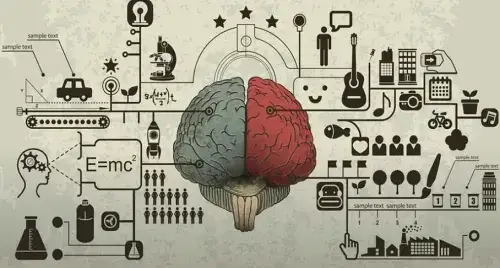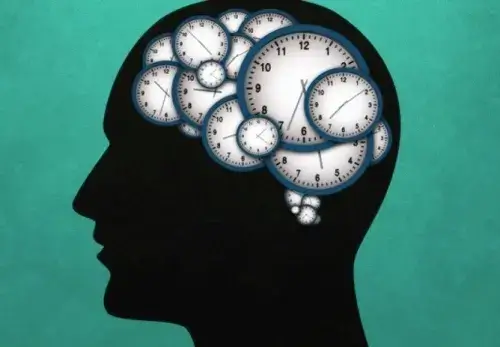Neuroscience Evolution. Just half a century ago, neuroscience was a relatively narrow field, focused primarily on exploring the nervous system and its fundamental mechanisms.
Scientists meticulously studied the structure of neurons, sought to unravel the principles of nerve impulse transmission, and mapped brain regions responsible for various bodily functions.
However, in recent decades, the field has undergone a revolution, transforming neuroscience into an expansive, multidisciplinary domain that reaches far beyond its original boundaries.
Neuroscience Evolution, Transformation.
This transformation has been driven not only by technological breakthroughs which have allowed us to observe the working brain with unprecedented precision but also by a growing understanding that the nervous system underpins every aspect of human behavior.
From financial decision-making to aesthetic preferences, from social interactions to the perception of urban spaces, neuroscience has revealed biological foundations in places once thought to be purely psychological or cultural.
Modern neuroimaging techniques, such as functional Magnetic Resonance Imaging (fMRI) and Electroencephalography (EEG), have enabled researchers to observe brain activity in real time.
This technological leap has spurred the development of various applied subfields.
Neuromarketing experts study how the brain responds to advertisements, neuroeconomists delve into the mechanisms behind financial decision-making, and neurourbanists investigate how urban environments shape human behavior.
These relatively new and rapidly developing branches of neuroscience have captured the attention of both scientific communities and the general public, demonstrating the practical relevance of understanding how the brain operates in everyday life.
How Does the Brain Make Financial Decisions?
In the early 1980s, Nobel Prize laureate Daniel Kahneman challenged the long-held belief that humans are rational beings making purely conscious decisions.
His research showed that our choices are often driven by emotions, social stereotypes, and fleeting impulses rather than cold, calculated reasoning.
These insights laid the groundwork for neuroeconomics a field dedicated to uncovering the biological mechanisms behind our financial decisions.
From a neuroeconomic perspective, decision-making unfolds in distinct stages: defining the problem, comparing alternatives, making a choice, and evaluating the outcome.
Of particular interest is the stage where alternatives are weighed, as this is where our preferences begin to take shape.
Neuroscience has even revealed some surprising findings: for example, certain brain structures (known as nuclei) become more active when a person anticipates a monetary reward.
In some cases, this activity can predict whether someone will buy a particular product or gain weight months before it actually happens.
Interestingly, the same brain regions that respond to personal financial gain also activate when people donate to charity, highlighting the complex and often unexpected ways our brains assign value.
Studies have also shown that when an individual’s opinion differs from that of the majority, the brain generates an “error signal” — a biological nudge that can prompt us to reconsider our decision.
This mechanism helps explain why group pressure so often influences our choices, even in trivial situations.
Neuroscience and the Economy.
Ethical Questions and New Opportunities. The development of neuroeconomics opens new doors for both innovation and ethical reflection.
On the one hand, understanding how people make decisions helps create more effective financial literacy programs, ultimately promoting mindful consumer behavior.
On the other hand, this knowledge can also be used to subtly manipulate consumer choices.
Benjamin Libet, a pioneering researcher, famously argued that free will might be an illusion that the brain makes decisions and sends a readiness signal before we are even consciously aware of it.
While this sparked heated debate, modern research suggests that the question of free will remains far from settled, and the mechanisms behind human choice are likely more complex than we once imagined.
The Hidden Triggers of Neuromarketing.
Unlike traditional marketing research, which relies on surveys and focus groups, neuromarketing specialists use advanced equipment to measure the brain’s immediate responses to products and advertisements.
Eye-tracking devices, for instance, monitor eye movements to identify which packaging or ad elements capture attention first.
Simultaneously, EEG scans record the brain’s electrical activity, offering insights into emotional responses to visual stimuli.
Neuromarketing also explores how sensory input shapes consumer behavior. Research shows that colors trigger specific physiological reactions:
• Red increases heart rate.
• Blue lowers blood pressure.
• Green is associated with health and well-being.
When it comes to sound, experiments have proven that slow-paced music can double the time shoppers spend in stores often without them even realizing the music’s subtle influence.
In one experiment, customers in a wine shop were more likely to buy French wine when French music was playing, even though they later cited personal taste as the reason for their choice.
Scent also plays a powerful role, directly affecting the limbic system the brain’s emotional center. The Hard Rock Hotel in Orlando, for example, boosted ice cream sales by 45% simply by infusing the air with the aroma of freshly baked goods.
Similarly, holiday-themed scents have been shown to increase retail revenue by around 6%.
Taste perception, too, is shaped by the brain.
A famous study involving Coca-Cola and Pepsi revealed that in blind taste tests, people tended to prefer Pepsi.
However, when brand labels were introduced, the strength of the Coca-Cola brand actually altered the participants’ perception of taste demonstrating the profound power of branding.
Thanks to its cutting-edge tools and techniques, neuromarketing continues to attract major corporate clients eager to better understand consumer behavior.
Both neuroeconomics and neuromarketing are shining examples of how brain research has expanded beyond traditional neuroscience and into the fabric of our everyday lives.
Each of these fields, in its own way, helps decode the mechanisms behind human decision-making — from the choices we make at the store to the way we experience urban environments.
Which Countries are the Most Advanced in the Implementation of Neuroscience?
United States.
The U.S. is the undisputed leader in neuroscience research.
• Home to world-class institutions: Harvard, MIT, Stanford, Johns Hopkins, and the NIH (National Institutes of Health) are all heavily involved.
• The U.S. invests billions into brain-related initiatives like the BRAIN Initiative (Brain Research through Advancing Innovative Neurotechnologies).
• Strong industry links: American tech companies like Neuralink (founded by Elon Musk) and Kernel push the boundaries of neurotechnology.
Germany.
Germany is a European powerhouse in both basic and applied neuroscience.
• Max Planck Institutes and universities like Heidelberg and Munich are global leaders.
• Known for precision in brain imaging technologies and neuropharmacology.
• Close collaboration between neuroscience and AI, especially in Berlin and Tübingen.
United Kingdom.
The UK has a strong neuroscience community, particularly in cognitive and behavioral neuroscience.
• World-renowned universities like Oxford, Cambridge, UCL, and Imperial College London.
• Major public funding from the Medical Research Council (MRC) and the Wellcome Trust.
• The UK also integrates neuroscience into public policy, health tech, and marketing sectors quite progressively.
Switzerland.
Small but mighty, Switzerland punches well above its weight in neuroscience.
• Home to EPFL (École Polytechnique Fédérale de Lausanne) and ETH Zurich, both global leaders in brain-computer interface research and neuroprosthetics.
• The Blue Brain Project, based in Switzerland, is a standout for brain simulation.
Japan.
Japan excels in neurotechnology and brain-machine interfaces.
• The RIKEN Brain Science Institute is one of the world’s top neuroscience centers.
• Known for robotics and brain-inspired computing — blending neuroscience and engineering like few others.
China.
China is rapidly scaling its neuroscience efforts, with major government investment.
• The China Brain Project aims to map the human brain and develop brain-inspired AI.
• Ambitious in applying neuroscience to education, mental health, and artificial intelligence.
Canada.
Canada plays a key role, especially in brain imaging and mental health research.
• Institutions like the University of Toronto, McGill, and UBC are highly respected.
• Active in the global Human Brain Project and home to world-class fMRI and EEG research facilities.
Each of these countries not only invests heavily in academic research but also bridges the gap between science and industry from marketing and economics to medicine and AI.
Have a great day!





